Abstract
The pecking response of pigeons was reinforced when a minimum period of time had elapsed since the last response (DRL schedule of food-reinforcement). Punishment, satiation, extinction, and stimulus change were employed separately to reduce responding. When the effects of the four procedures were compared, punishment was found capable of producing a more immediate, complete and long lasting response reduction than the others. Punishment had its maximum effect on the responses that were least relevant to reinforcement. The punishment reduced the frequency of the short inter-response times to a greater extent than did either extinction or satiation. In this way, punishment actually increased the efficiency of the DRL responding.
Full text
PDF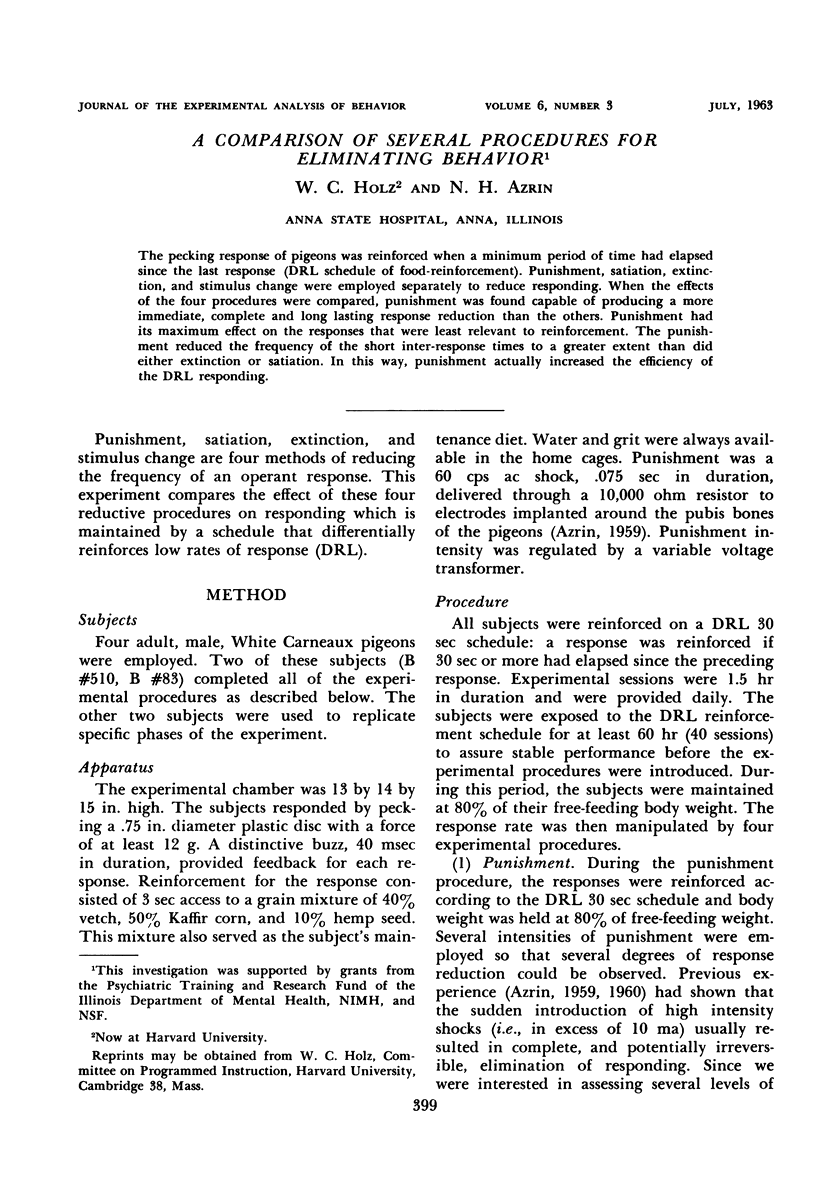
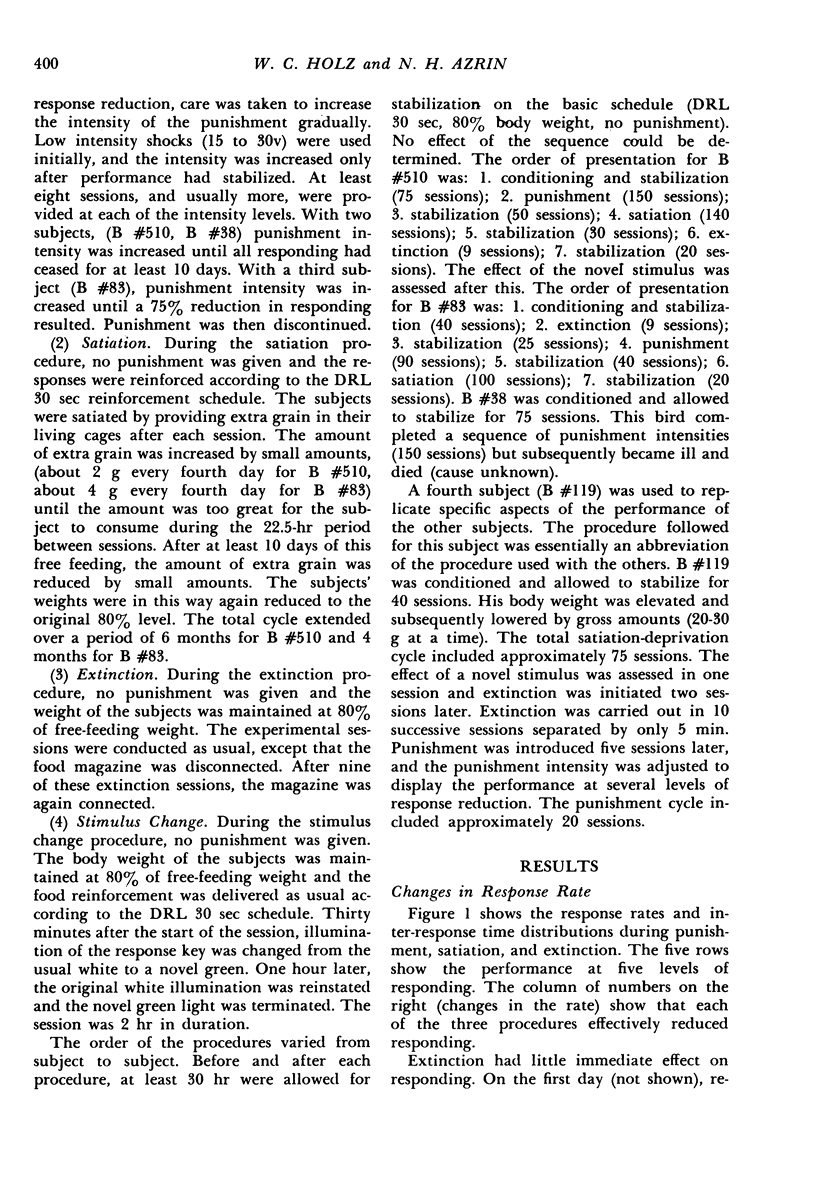
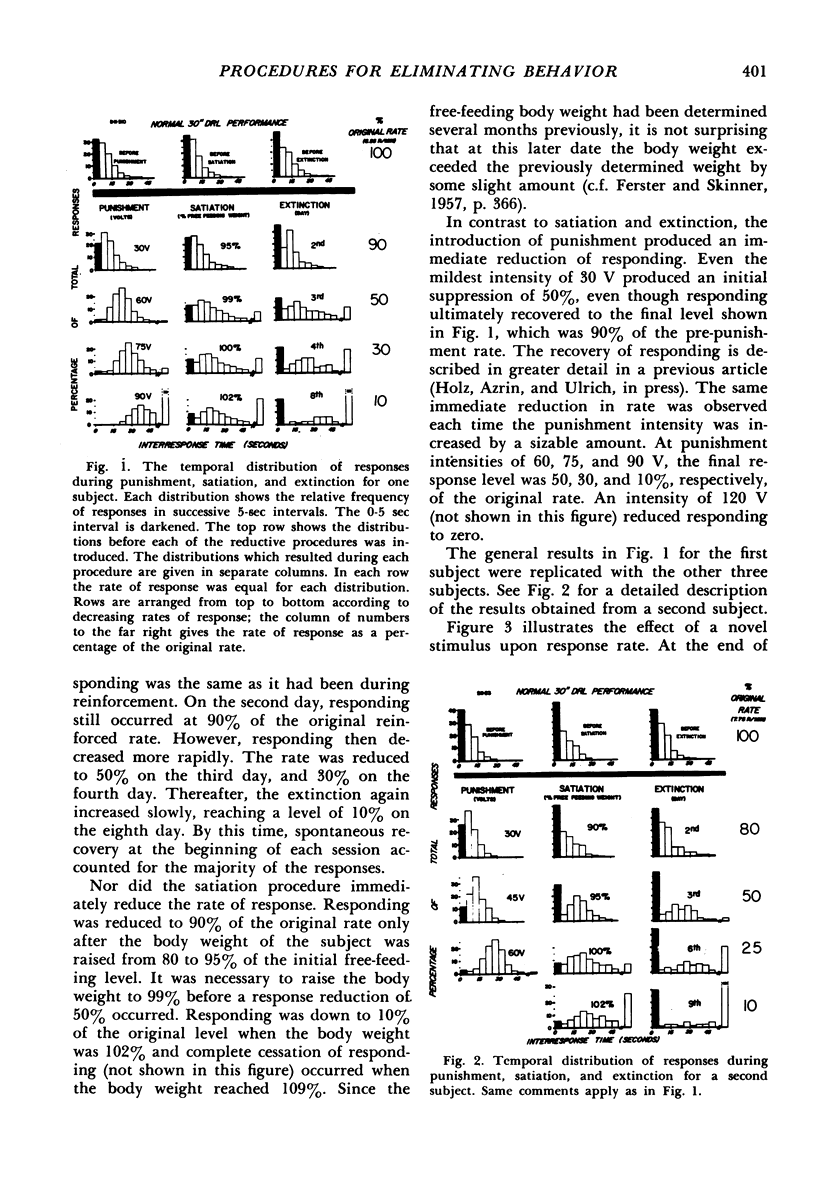
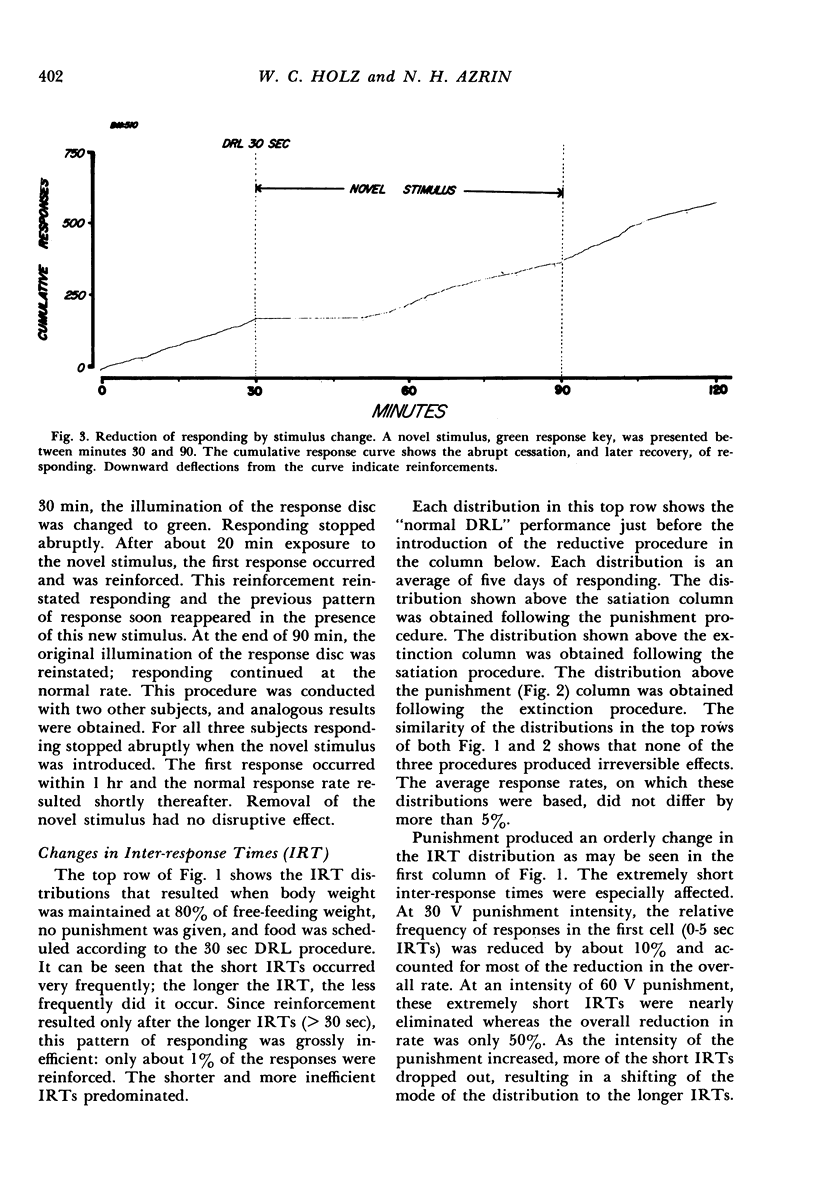
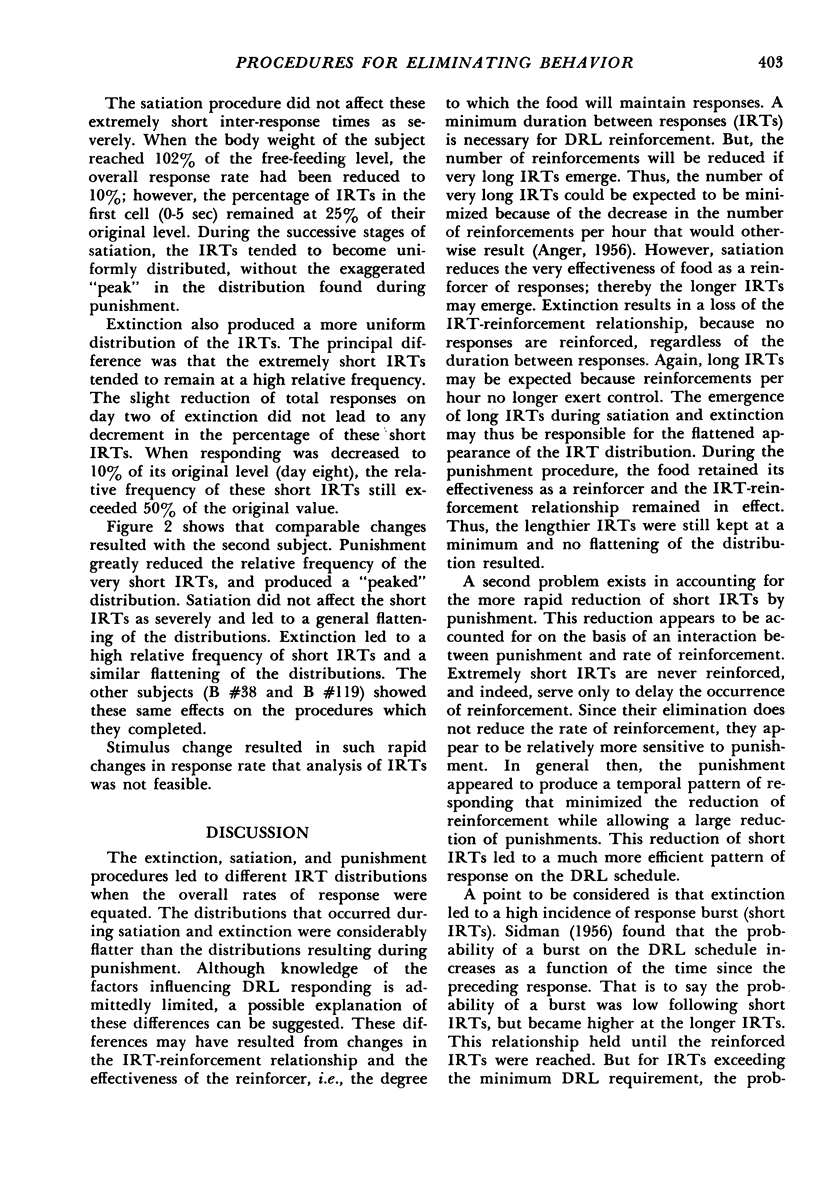
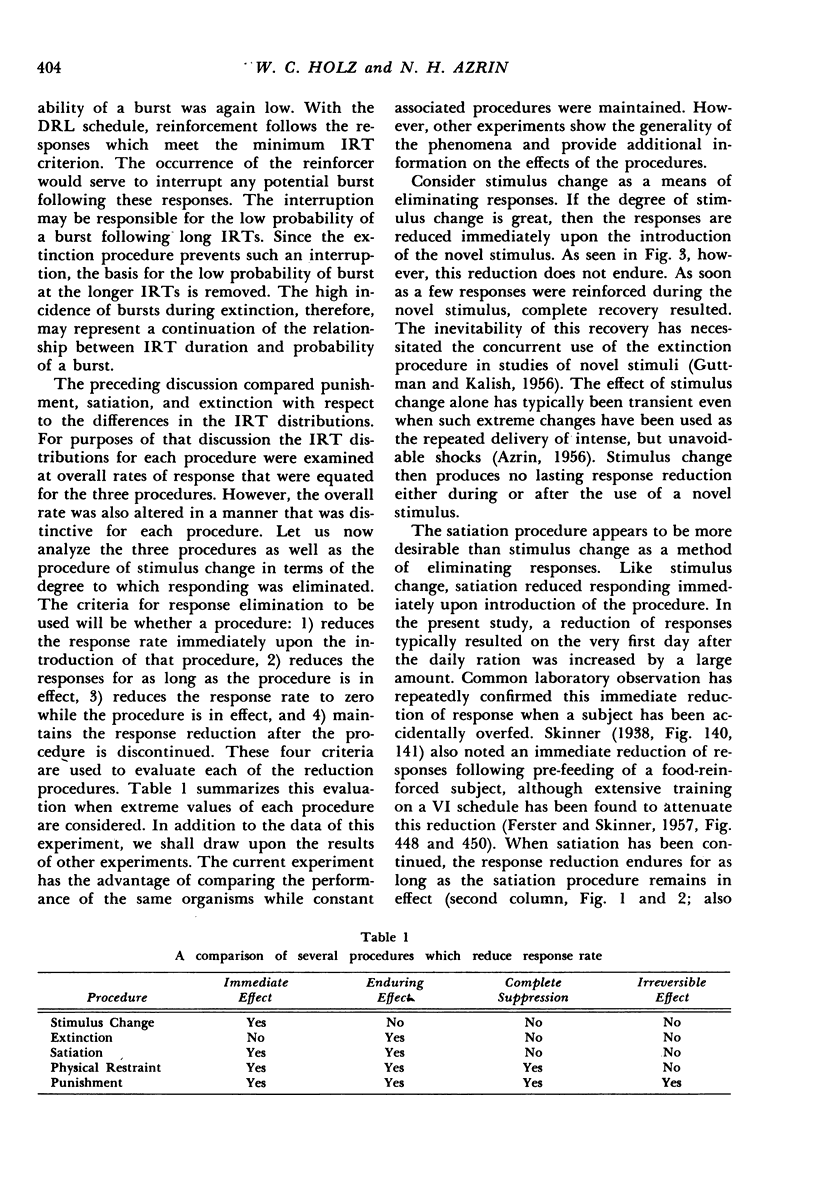
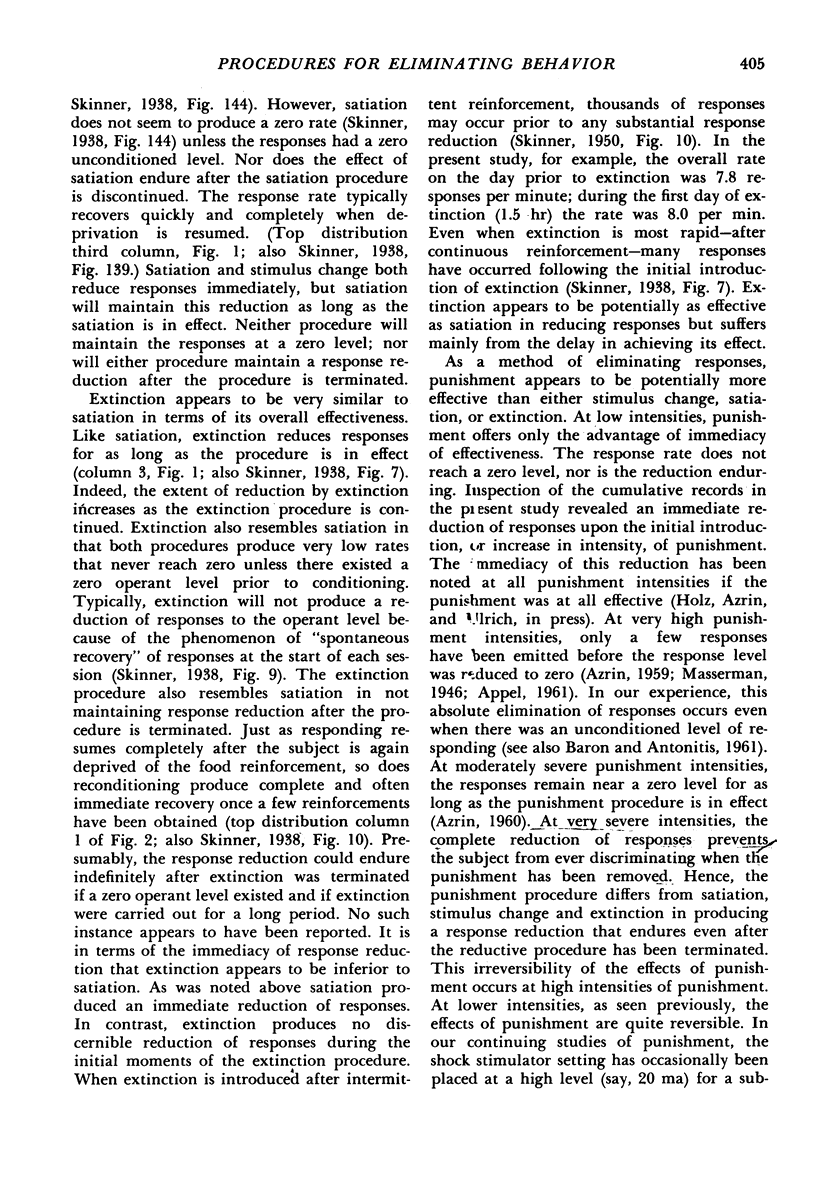
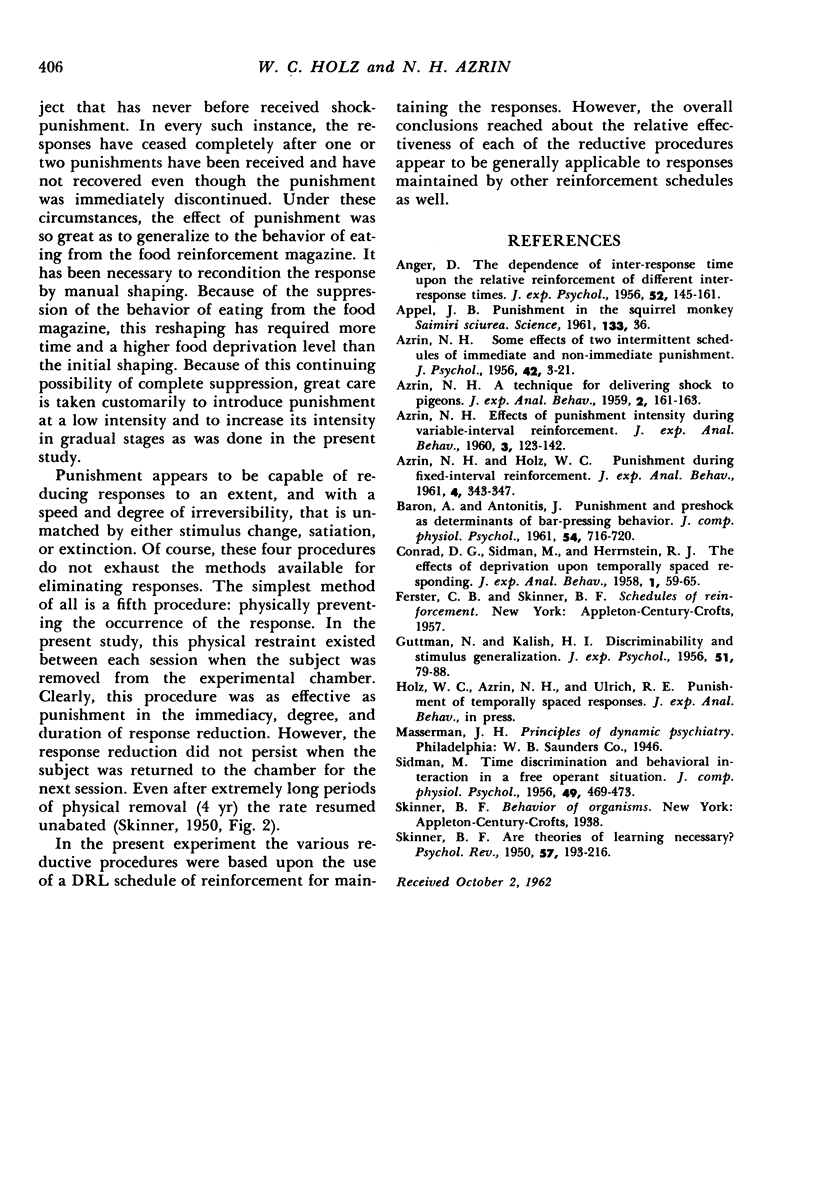
Selected References
These references are in PubMed. This may not be the complete list of references from this article.
- ANGER D. The dependence of interresponse times upon the relative reinforcement of different interresponse times. J Exp Psychol. 1956 Sep;52(3):145–161. doi: 10.1037/h0041255. [DOI] [PubMed] [Google Scholar]
- APPEL J. B. Punishment in the squirrel monkey Saimiri sciurea. Science. 1961 Jan 6;133(3445):36–36. doi: 10.1126/science.133.3445.36. [DOI] [PubMed] [Google Scholar]
- AZRIN N. H. A technique for delivering shock to pigeons. J Exp Anal Behav. 1959 Apr;2:161–163. doi: 10.1901/jeab.1959.2-161. [DOI] [PMC free article] [PubMed] [Google Scholar]
- AZRIN N. H. Effects of punishment intensity during variable-interval reinforcement. J Exp Anal Behav. 1960 Apr;3:123–142. doi: 10.1901/jeab.1960.3-123. [DOI] [PMC free article] [PubMed] [Google Scholar]
- AZRIN N. H., HOLZ W. C. Punishment during fixed-interval reinforcement. J Exp Anal Behav. 1961 Oct;4:343–347. doi: 10.1901/jeab.1961.4-343. [DOI] [PMC free article] [PubMed] [Google Scholar]
- BARON A., ANTONITIS J. J. Punishment and preshock as determinants of bar-pressing behavior. J Comp Physiol Psychol. 1961 Dec;54:716–720. doi: 10.1037/h0040066. [DOI] [PubMed] [Google Scholar]
- CONRAD D. G., SIDMAN M., HERRNSTEIN R. J. The effects of deprivation upon temporally spaced responding. J Exp Anal Behav. 1958 Jan;1:59–65. doi: 10.1901/jeab.1958.1-59. [DOI] [PMC free article] [PubMed] [Google Scholar]
- GUTTMAN N., KALISH H. I. Discriminability and stimulus generalization. J Exp Psychol. 1956 Jan;51(1):79–88. doi: 10.1037/h0046219. [DOI] [PubMed] [Google Scholar]
- SIDMAN M. Time discrimination and behavioral interaction in a free operant situation. J Comp Physiol Psychol. 1956 Oct;49(5):469–473. doi: 10.1037/h0041892. [DOI] [PubMed] [Google Scholar]
- SKINNER B. F. Are theories of learning necessary? Psychol Rev. 1950 Jul;57(4):193–216. doi: 10.1037/h0054367. [DOI] [PubMed] [Google Scholar]


